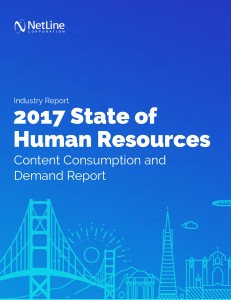*article originally appeared on AdAge.com
 It’s 2017, and every CMO is promising their CEO mountains of Glengarry leads for their sales organization to close. We’re not talking about normal, old Glengarry leads, we’re talking crème de la crème leads … the elusive C-suite leads that every marketer this side of Mars is longing for. Sound about right? Anything wrong with this picture? I see you nodding your head yes (well done). Everything is wrong with this picture.
It’s 2017, and every CMO is promising their CEO mountains of Glengarry leads for their sales organization to close. We’re not talking about normal, old Glengarry leads, we’re talking crème de la crème leads … the elusive C-suite leads that every marketer this side of Mars is longing for. Sound about right? Anything wrong with this picture? I see you nodding your head yes (well done). Everything is wrong with this picture.
The complexity of the b-to-b sale and its continued fragmentation has been documented ad nauseam over the past decade. Yet one thing continues: a complete and utter disregard from senior corporate and senior marketing leadership to accept the harsh reality that a marketing strategy solely focused on reaching into the C-suite will not yield success.
The marketing prophets are wrong
I get it! I’ve been on the calls, I’ve read the emails, and I’ve been in the meetings. So-called marketing ninja’s, strategic consultants, multi-exit pedigreed CMO’s, self-described visionaries, or, wait for it, a marketing prophet enters the fray and belts out the following gem:
“I’ve peeled back the layers of the onion and would like to empower you all with a recommendation I’ve been noodling on. When push comes to shove, I think we need to isolate one throat to choke in our key accounts and move the needle — yesterday. So let’s just cut the crap and sell directly to the final decision maker! It’s a slam-dunk right?! We can’t boil the ocean. Let’s collectively recognize what I’m presenting is a massive paradigm shift, but I’m thinking outside the box people. I have limited bandwidth over the coming quarter but let’s circle back and admire our success. You’re welcome.”
Everyone in the room is pale, silent, knows better, but doesn’t dare challenge the almighty one who just threw-up a massive pile of nonsense onto the conference room table with such basic and disconnected thinking. It’s destined to fail. And this is why…
The buying committee has changed
The buying committee has continued to both broaden and deepen across organizations globally as the market has matured. It simply makes sense when you apply a dose of reality and have an honest look at the modern-day corporate landscape. Departmental interdependencies have become a necessity to the process. Subject matter experts across multiple departments, disciplines and levels comingle to influence the vetting, recommendation and final decision being made within accounts. Ignoring this reality is synonymous with adding one more nail in your career coffin.
Follow the data
 The foundation of my position is the 2017 State of Human Resources: Content Consumption and Demand Report, which analyzes more than 8.5 million leads generated via content syndication over 2016. In researching the b-to-b content consumption patterns within the human resources segment, the report examines self-identified HR professionals and HR content in comparison to the most in-demand audiences from HR companies — identifying trends, strategies and actionable opportunities for human resource organizations’ demand-generation campaigns this year.
The foundation of my position is the 2017 State of Human Resources: Content Consumption and Demand Report, which analyzes more than 8.5 million leads generated via content syndication over 2016. In researching the b-to-b content consumption patterns within the human resources segment, the report examines self-identified HR professionals and HR content in comparison to the most in-demand audiences from HR companies — identifying trends, strategies and actionable opportunities for human resource organizations’ demand-generation campaigns this year.
The heavy hitter insight for me was that mid-level HR professionals drove the majority of HR content consumption this year, including directors, managers and individual contributors. Meanwhile, senior-level leadership roles were less active over their mid-level counterparts. In an annual comparison, director-level content consumption increased 27% YOY. Most alarmingly, the C-suite accounted for a measly 5% of the content being consumed.
Let’s exhale for a moment and hit the refresh button. We’re only one month into the year, surely there’s enough time to correct course.
How to survive
More often than not, your target ‘decision maker’ is realistically an aggregate of a number of influencers who help foster the final recommendation within the organization.
Reach beyond your defacto comfort zone to drive continued growth by expanding and diversifying your footprint.
Consider the individual contributor. While senior-level leadership is an important target, they quite simply do not drive the same level of content consumption activity. The collective reality is that mid-level professionals drove the overwhelming majority of content consumption this year.
Build deeper influence within the organization by expanding your target range outside senior leadership.
Regardless of industry, the market is only getting more complex by the second. Organizations will require higher levels of research to not only stay on top of trends and regulations but also make important purchase decisions. B-to-b marketers need to stay on top of this by diversifying their target audience and producing the resources each of these personas needs to stay top of mind, solve problems and aid purchase decisions.
Read the full report for HR marketers now, 2017 State of Human Resources: Content Consumption and Demand Report.
